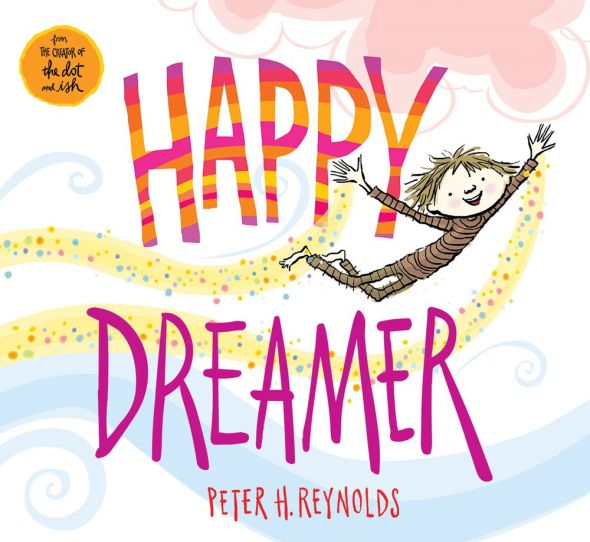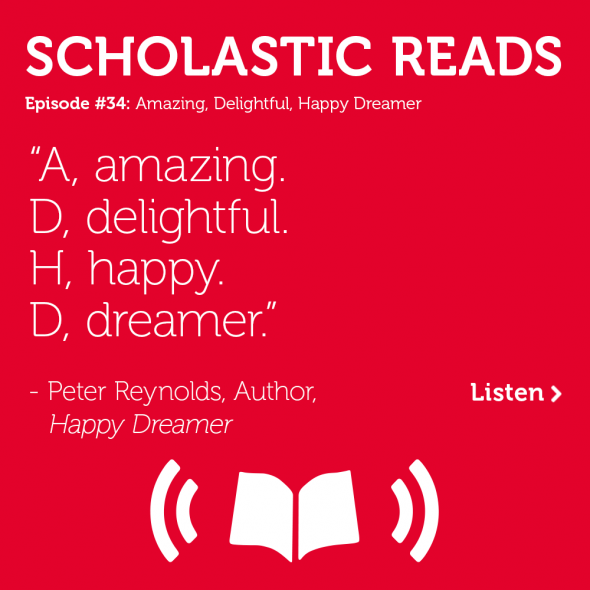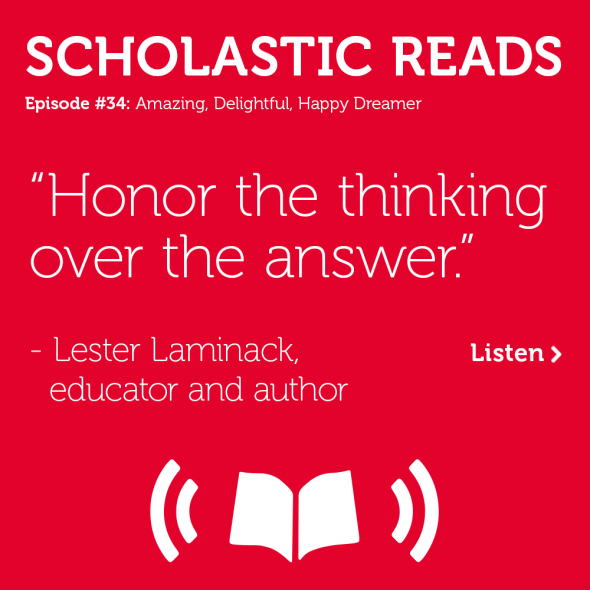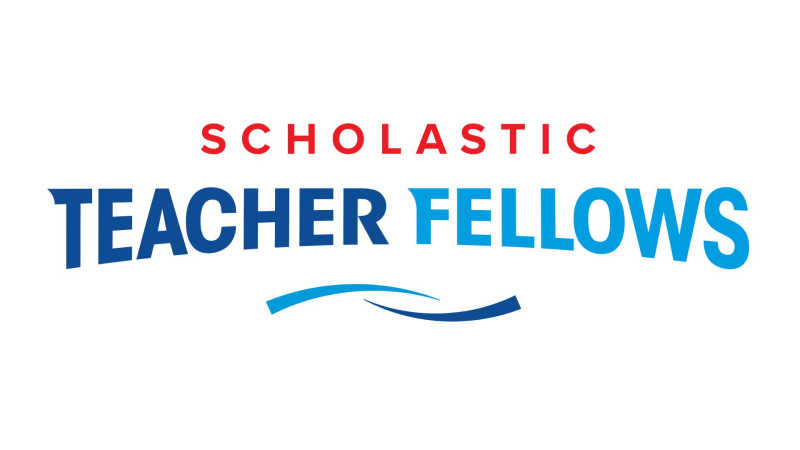 We've just released a new podcast episode! This week, author and illustrator Peter H. Reynolds (The Dot, Ish) talks with us about his new picture book, Happy Dreamer, and educator and author Lester Laminack discusses ways teachers can make children of all learning styles feel included and engaged in the classroom.
We've just released a new podcast episode! This week, author and illustrator Peter H. Reynolds (The Dot, Ish) talks with us about his new picture book, Happy Dreamer, and educator and author Lester Laminack discusses ways teachers can make children of all learning styles feel included and engaged in the classroom.
Peter begins by sharing the source of his inspiration for Happy Dreamer:
"I attended a conference at Harvard University about 10 years ago on learning differences," he says. "They had a panel of really successful people in business and entertainment and other fields, and they all described the way they learned and how school was for them. And for all of them, it seemed that school was a bit of a challenge, but they always managed to get through because of their interests. . . Dr. Lynn Meltzer who was running the panel noted that all of these CEOs and successful people had demonstrated attributes of ADHD. And while they had not been diagnosed as such as children, that they probably had some symptoms of ADHD."

"And I thought to myself, 'Well, that's funny because they described my childhood.' And while I wasn't diagnosed with ADHD, I could definitely relate to many of the attributes, and I was thinking to myself, 'If ADHD describes the type of brain I have, well, I think it's a good thing and not something to be worried about.'"
"I thought ADHD sounded a bit clinicial and I wondered if I could warm it up a bit. So I took my pencil and I wrote ADHD. And for A, I wrote amazing. D, delightful. H, happy. And the last D, dreamer. Amazing, delightful, happy dreamer. I went home and I decided to write a little poem about the way my brain worked, and it emerged as Amazing Delightful Happy Dreamer, and we shortened that to Happy Dreamer."
Peter goes on to share some insight into how his brain works, some teachers who inspired him and helped him along the way, as well as some new projects he's working on.
 We were then joined by Lester Laminack, an educator and author, who shared some valuable insights about ways teachers can make their classroom more inclusive to all learning styles. Some of his recommendations include:
We were then joined by Lester Laminack, an educator and author, who shared some valuable insights about ways teachers can make their classroom more inclusive to all learning styles. Some of his recommendations include:
- Have diverse books in the classroom
- Allow children to step away from their work and come back to it, if possible
- Insert imagination into your lessons — no matter what the subject! — as often as possible
- Understand that your students may not have the same learning style you do
- Stop asking children to raise their hands before they speak. Instead, introduce turn and talks to maximize the value of the time they're sharing their thoughts
Listen to the full episode here, or by subscribing to Scholastic Reads on iTunes!





